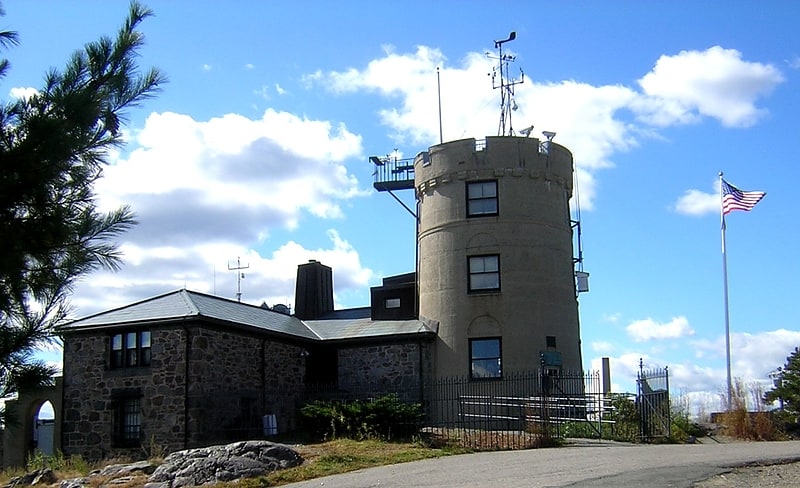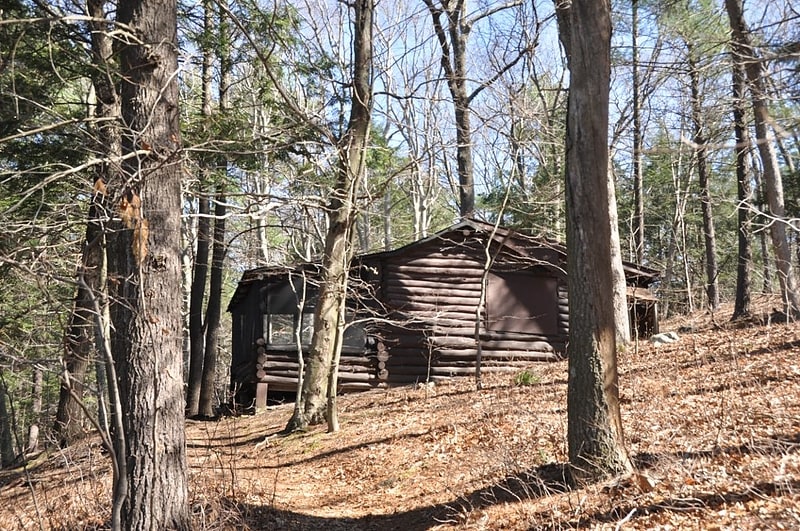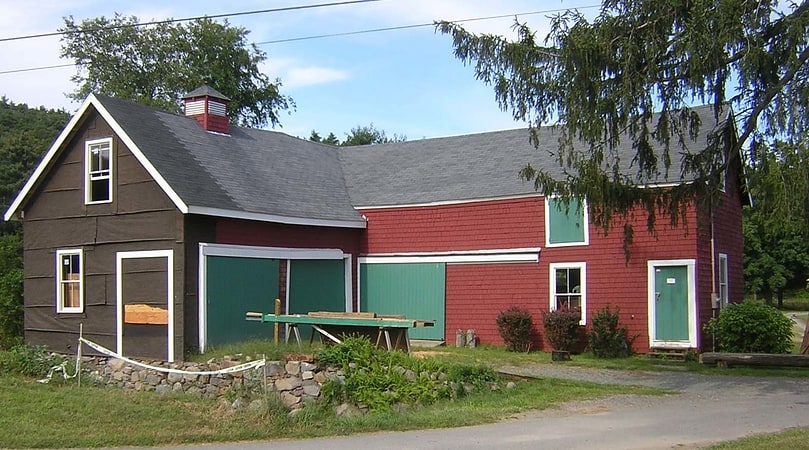Discover 5 hidden attractions, cool sights, and unusual things to do in Pope John Paul II Park Reservation (United States). Don't miss out on these must-see attractions: Great Blue Hill, Houghton's Pond, and Blue Hill Meteorological Observatory. Also, be sure to include Ponkapoag Camp of Appalachian Mountain Club in your itinerary.
Below, you can find the list of the most amazing places you should visit in Pope John Paul II Park Reservation (Massachusetts).
Table of Contents
Great Blue Hill

Hill with a ski area and a stone tower. Great Blue Hill, also known as Massachusett, is a hill of 635 feet located within the Blue Hills Reservation in Milton and Canton, Massachusetts, about 10 miles south of downtown Boston. It is the highest point in Norfolk County and the Greater Boston area.
The modern name for the hill was given by early European colonizers who, while sailing along the coastline, noticed the bluish hue of the exposed granite faces when viewed from a distance (due to Riebeckite). The Blue Hills' eastern slopes face the ocean and lie within Quincy. The area once attracted quarrying for its "blue granite".
The name of the Massachusett Indian tribe and their language (and thus the name of the Bay, Colony, Commonwealth/State, etc.) derive from the Massachusett name for the hill: massa-adchu-es-et, where massa- is "large", -adchu- is "hill", -es- is a diminutive suffix meaning "small", and -et is a locative suffix, identifying a place.[1]
Houghton's Pond

Pond in Massachusetts. Houghton's Pond is a spring-fed kettle hole pond in Milton, Massachusetts, south of Boston. Like many ponds and lakes in the United States, it was formed by receding glaciers about 10,000 years ago. By the standard definition of lakes being bodies of water larger than 20 acres, the 24-acre pond is technically a lake.
The pond is located within the Blue Hills Reservation and managed by the Massachusetts Department of Conservation and Recreation. The Massachusett tribe once fished the pond and hunted in the woodlands that surround it. The local indian tribe called it Hoosic-Whisick, but around 1690, a British settler named Ralph Houghton bought 360 acres of forest and land (including the pond) to farm. He used the pond as a source of ice, drinking water and fish. His 1690 farmhouse was demolished in 1894 during the development of the Blue Hills Reservation and once stood where the refreshment stand now stands.
The area is a popular destination for Massachusetts residents in all seasons. Near the city limits of Boston, the setting offers people the chance to quickly immerse themselves in a natural surrounding. The pond offers a visitor's center, supervised swimming area, stocked fishing, picnic areas, and various outdoor sports. The refreshment stand is on the National Register of Historic Places. The pond is surrounded by an array of hiking trails within the Blue Hills Reservation. The area is most popular in the summer for swimming and cook-outs.[2]
Address: 840 Hillside St, 02186-5228 Milton (Milton)
Blue Hill Meteorological Observatory

The Blue Hill Meteorological Observatory, also known as Great Blue Hill Weather Observatory, Blue Hill Weather Observatory, or simply the Blue Hill Observatory, in Milton, Massachusetts is the foremost structure associated with the history of weather observations in the United States. Located atop Great Blue Hill at the junction of Interstate 93 and Route 138 about 10 miles south of Boston, Massachusetts, it is home to the oldest continuous weather record in North America, and was the location of the earliest kite soundings of the atmosphere in North America in the 1890s, as well as the development of the radiosonde in the 1930s.
Founded by Abbott Lawrence Rotch in 1884, the observatory took a leading role in the newly emerging science of meteorology and was the scene of many of the first scientific measurements of upper atmosphere weather conditions, using kites to carry weather instruments aloft. Knowledge of wind velocities, air temperature and relative humidity at various levels came into use as vital elements in weather prediction due to techniques developed at this site. By 1895 the observatory was the source of weather forecasts of remarkable accuracy. On October 8, 1896, a record of 8740 feet (2,665 m) was achieved for a weather kite. During the Great New England Hurricane of 1938, the observatory measured the strongest wind gust ever directly measured and recorded in a hurricane at 186 mph (299 km/h).
The observatory remains active to this day, continuing to add to its database of weather observations now more than one hundred years old, and stands as a monument to the science of meteorology in the United States.
The observatory offers meteorological science programs and is open to the public on weekends.[3]
Address: 1 Observatory Service Rd, 02186 Milton (Milton)
Ponkapoag Camp of Appalachian Mountain Club

The Ponkapoag Camp of Appalachian Mountain Club is a camp of the Appalachian Mountain Club located on the eastern shore of Ponkapoag Pond in Randolph, Massachusetts. The camp consists of a collection of 20 cabins, dispersed across a wooded area, that typically sleep 4-6 people. No electricity or potable water is available at the camp; untreated water may be taken from the pond. In the summer the camp also makes available a few tent sites for camping. The camp was established in 1921.
Two of the camp's oldest surviving cabins were listed on the National Register of Historic Places in 1980.[4]
Old Barn

Building in Massachusetts. The Old Barn is a historic barn off Blue Hill River Road in Canton, Massachusetts.
Based on the construction methods used, it is estimated to have been built between 1690 and 1720, and is the oldest building on Brookwood Farm. It is currently undergoing a major restoration undertaken by the North Bennet Street School. They have removed the oldest 20-by-20-foot (6.1 m × 6.1 m) section for major work to repair rot and insect damage. It is expected to be returned to the site in 2010 or 2011. All of the photographs here are of the portions of the barn built after the original barn.
The barn was added to the National Register of Historic Places as Old Barn on September 25, 1980.[5]